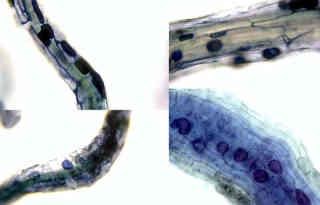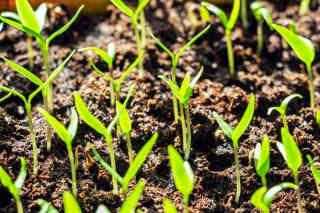We're all familiar with some soil dwellers, such as earthworms. But the lion's share of life underneath is invisible to the naked eye. Microbiota like bacteria, nematodes, and fungi play vital roles in our environment. These tiny lifeforms break down dead leaves and organic matter, they cycle nutrients, carbon and water. Without them, ecosystems would collapse. Amazingly, most of this wealth of life is unknown to science.
Australia has not undergone the same glacial or volcanic activity as other parts of the world. That's left most of our soil old and infertile. Our soils are highly sensitive to human pressures, such as contamination, acidification and loss of organic carbon. When we remove communities of plants, this leads to soil erosion. Land clearing also hits underground life hard, causing microbial diversity to decline.
Soil's lifeforms are also under immense pressure from agriculture, as well as climate change and urban expansion. If we include livestock, more than half of Australia is now being used for farming. If we can improve farming methods, we can bring back soil biodiversity—and use it to produce healthy crops.
Why does it matter if we lose soil microbial diversity?
Australia has many different soil types. Images of each state's iconic soil demonstrates how much they can differ. Importantly, soils differ greatly in their ability to support industrial crop production. Much of Australia is not naturally suited to this.

Fungal structures inside the roots of a plant. Arbuscular mycorrhizal fungi grow into plant roots to obtain carbon and provide plants with access to nutrients and water. Credit: Adam Frew
Soil fungi can boost plant uptake of key resources like phosphorus and water and can even improve how plants resist pests. These fungi are also critical to the cycling of nutrients and carbon in our environment, and the networks they form give structure to soil. These relationships go back much further than humans do. Plants and fungi have been cooperating for hundreds of millions of years.
Despite breaking up this relationship in our agriculture, we have achieved ever-increasing yields.
That's because most crop and pasture production relies on various fertilizers and pesticides for crop nutrition and pest control, rather than fungal networks or soil biology. The continued development of these fertilizers and pesticides have undoubtedly enhanced crop production and allowed millions of people to escape hunger and poverty.
The problem is, relying on pesticides and fertilizers is not sustainable. Many pesticides are under increasing restrictions or bans, and phosphorus fertilizer will only become more expensive as we deplete global phosphate reserves. Critically, their excessive use negatively impacts soil biology and the environment.
If we reduce the diversity of fungi in our soils, we lose the benefits they provide to healthy ecosystems—and to our crops. A soil with less biodiversity erodes more easily, loses its stored carbon quicker and causes disrupted nutrient cycles.

Mycorrhizal fungi grow into plant roots and through soil, creating vast networks belowground which are vital to soil health. Credit: Loreto Oyarte Galvez, VU Amsterdam
Can we protect our soil fungi?
Yes—if we change how we manage our soils. By working with our living soils rather than against them, we can meet increasing demand for food and keep farms economically viable.
As you might expect, organic and conservation farming is less damaging to soil fungi compared to conventional farming, due to their limited use of certain fertilizers and most pesticides.
These approaches also involve less plowing or tilling of the soil, which lets fungal networks remain intact and so benefitting soil structure. This can promote plant protection from pests, and this soil biodiversity also keeps disease-causing microbes in check.
Clearly, changes to our agriculture can't happen overnight. Sri Lanka's sudden ban on synthetic fertilizers and pesticides in 2021 caused chaos in their farming sector and continues to threaten their food security. Widespread adoption of more sustainable farming techniques in Australia must be done gradually, with support and incentives from industry and government. But it will have to happen. The status quo can't last, as our soils continue to deteriorate and fertilizers and pesticides become more expensive and unavailable.

Harnessing underground biodiversity can help crops grow. Credit: Shutterstock
To care for our soils, we need to know more about them
While we know the life permeating our soils is in trouble, we need to know more. One important finding from the State of the Environment report was the need for more data on the biology of our soil to aid sustainable land use.